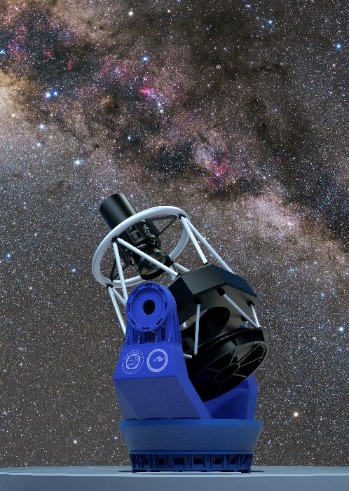Wide Field Survey Telescope
University of Science and Technology of China; Purple Mountain Observatory
Time-domain astronomy through large-scale repeated observations, exploring various astronomical objects and new phenomena in the universe, and monitoring the time variation of various astronomical objects, is a new direction for astronomy to have major scientific opportunities.
Overview
The wide field survey telescope (WFST), jointly developed by the University of Science and Technology of China and the Purple Mountain Observatory, is the largest time-domain survey facility in the northern hemisphere. WFST is characterized by a 2.5-meter primary mirror and a prime-focus camera with a field of view (FOV) 6.5 square degrees filled with 9 × 9K × 9K mosaic CCD detectors, making WFST one of the most powerful transient survey facilities in the 2020s. With an atmospheric distortion corrector, its advanced optical design promises a homogeneous and distortion-free image quality that 80% energy of a point source falls within 0.4 arcsecond across the entire FOV. The image quality holds in the $u, g, r, i, z$ and $w$ bands.
Science Goals
- Survey the northern sky with the highest sensitivity to explore the variable universe and catch up the time-domain events, such as supernovae, tidal disruption events, multi-messenger events or unknowns in the current framework of astrophysics;
- Find and track one million solar system objects for a panchromatic view of the solar system and understand its kinematic evolution; discover planets or their moons in the Kuiper Belt and beyond;
- Provide high-precision astrometric and photometric catalogs of objects down to $r$ <25 mag, allowing us to precisely map structures of the Milky Way and the nearby universe;
- Place remarkably improved constraints on galaxy-halo connection, cluster characterization and cosmology with WFST 6-years stacked images.
